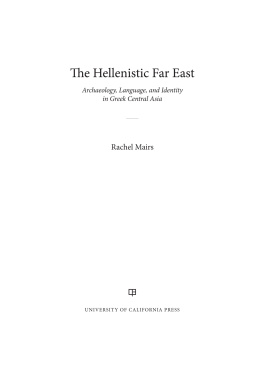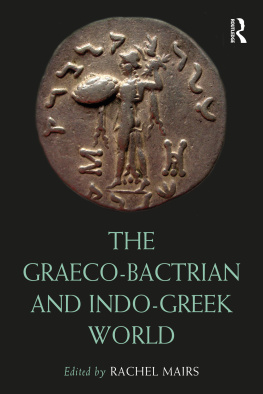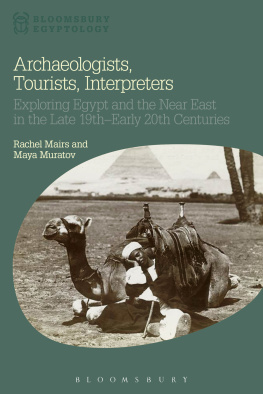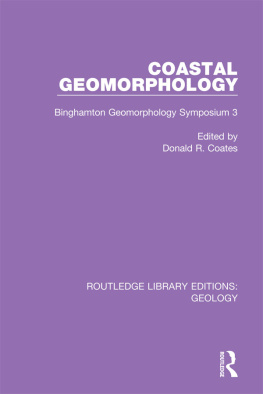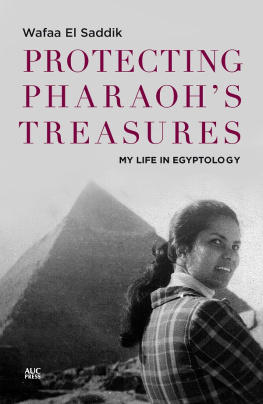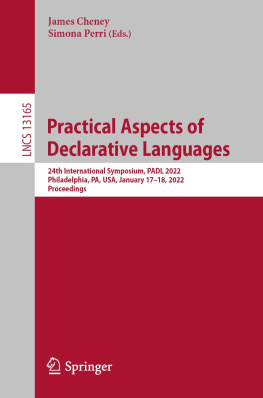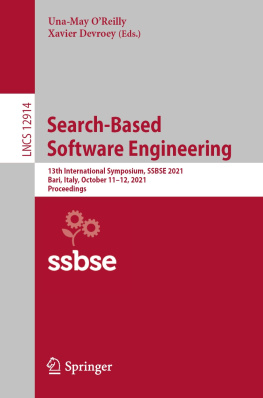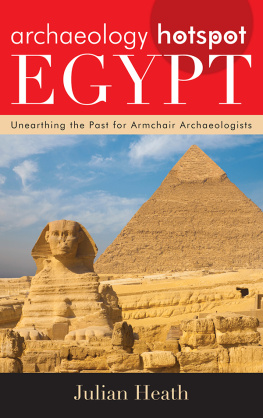Rachel Mairs - Current Research in Egyptology 2005: Proceedings of the Sixth Annual Symposium
Here you can read online Rachel Mairs - Current Research in Egyptology 2005: Proceedings of the Sixth Annual Symposium full text of the book (entire story) in english for free. Download pdf and epub, get meaning, cover and reviews about this ebook. year: 2007, publisher: Oxbow Books, genre: History / Science. Description of the work, (preface) as well as reviews are available. Best literature library LitArk.com created for fans of good reading and offers a wide selection of genres:
Romance novel
Science fiction
Adventure
Detective
Science
History
Home and family
Prose
Art
Politics
Computer
Non-fiction
Religion
Business
Children
Humor
Choose a favorite category and find really read worthwhile books. Enjoy immersion in the world of imagination, feel the emotions of the characters or learn something new for yourself, make an fascinating discovery.
- Book:Current Research in Egyptology 2005: Proceedings of the Sixth Annual Symposium
- Author:
- Publisher:Oxbow Books
- Genre:
- Year:2007
- Rating:3 / 5
- Favourites:Add to favourites
- Your mark:
- 60
- 1
- 2
- 3
- 4
- 5
Current Research in Egyptology 2005: Proceedings of the Sixth Annual Symposium: summary, description and annotation
We offer to read an annotation, description, summary or preface (depends on what the author of the book "Current Research in Egyptology 2005: Proceedings of the Sixth Annual Symposium" wrote himself). If you haven't found the necessary information about the book — write in the comments, we will try to find it.
Current Research in Egyptology 2005: Proceedings of the Sixth Annual Symposium — read online for free the complete book (whole text) full work
Below is the text of the book, divided by pages. System saving the place of the last page read, allows you to conveniently read the book "Current Research in Egyptology 2005: Proceedings of the Sixth Annual Symposium" online for free, without having to search again every time where you left off. Put a bookmark, and you can go to the page where you finished reading at any time.
Font size:
Interval:
Bookmark:

Y. E. Balbaligo
The Petrie Museum of Egyptian Archaeology at University College London (UCL) is a distinguished collection of Egyptian artefacts created through the bequest of the writer Amelia Edwards and named after W. M. F. Petrie, the prolific archaeologist and first professor of Egyptology in England. Since the museum was established in 1892, the role of the museum, and of museums in general, has changed. Museums are no longer seen as solely guardians or keepers of collections. Museums now make artefacts accessible to people and enable them to explore collections for inspiration, learning and enjoyment (definition from the Museums Association 1998). Museums are also tied to the cultural and social values of their times and there is now an emphasis on making museums inclusive institutions that are accessible to a diverse body of people. This paper will focus on the Petrie Museum and discuss the current initiatives to target diverse audiences beyond the students the collection was originally intended for, and how they are making the past accessible to new audiences and why. By discussing the current outreach initiatives, it is hoped that they will illuminate the relationship between how contemporary social agendas affect museums and how this can potentially have an impact on the development of Egyptology. These issues will be framed within debates in museology and public archaeology, in order to bring these two complementary disciplines to Egyptological audiences and show how this existing body of literature can contribute to the debates within Egyptology about who the past is for and how we, as a discipline, interpret and present the past. The ultimate aim of this paper is to share good practice and highlight the strengths of the Petrie Museum.
It is acknowledged that museums are a significant and powerful vehicle for the public construction of the past and for public involvement in archaeology (Merriman 2004b, 85). Archaeology, however, is inescapably highly politicised. It is embroiled in social and cultural debates about the past and its meaning for the present, and has significance beyond the accumulation of abstract knowledge about the past (Smith 2004, 1). As cultural houses for archaeological objects, museums are ultimately about the development of cultural identities as well as notions of citizenship, and these are all inextricably bound with politics. In 1997, the new Labour government saw a shared culture as a vehicle for increasing social cohesion through individual self-fulfilment, awareness of citizenship and communal participation. Thus, ideas of social inclusion are enshrined in governmental policy by the Department for Culture Media and Sport (DCMS) and the Social Exclusion Unit (formerly in the Cabinet Office and now in the Office of the Deputy Prime Minister), in an attempt to enhance the cultural life of Britain and to make British society inclusive to all people. Museums therefore have the potential to be agents of social change where museums are often the focal point for cultural activity in the community, interpreting its history and heritage. This gives people a sense of their own identity, and that of their community (DCMS 2000, 3; see also 1999; 2001; Dodd and Sandell 2001). The emphasis on dismantling barriers to accessing museums and on providing services for a much broader range of people has the potential to contribute to greater social equality. While the concept of social inclusion has become embedded throughout central government policy, critics have argued that the assignment of social goals to cultural organisations is tying them too closely to the state and eroding their autonomy and reducing the arts to a tool for governmental control (Sandell 2002, 18). However, museums and galleries have the potential to contribute towards the combating of inequality and they do have a responsibility to do so. This requires museums to become responsive, not to short-term, party political objectives but rather to longer-term paradigmatic shifts in thinking, whilst being contemporary and also understanding their position in their own social structure. The Petrie Museum is a Designated museum with an outstanding collection and receives significant funding from DCMS. As well as serving its primary users the staff and students at UCLit must also demonstrate its worth to a wider audience who will benefit from the collection. While it is accountable to external funding bodies, the Petrie is also bound to its parent institution, UCL.
As a university museum, the Petrie receives most of its funding from UCL and was founded with the same libertarian ethos. The university is also home to four publicly accessible museums, of which the Petrie is one, and twelve departmental collections, unified under the name UCL Museums and Collections. These museums and collections cover a diverse array of subjects from science and archaeology, to geology, natural history and art, and were gathered and developed from the 1820s to assist UCLs academic staff in their teaching and research. Previously all collections existed separately, however in 1998 UCL invested further resources into the care and management of the collections and for the first time centralised its management systems. All of the museums and collections work towards collective goals and this can be seen in the UCL Museums and Collections mission statement of the 5 Year Strategic Plan 20042009 , a document which provides a focus for shared common objectives and to give the museums a framework within which to work and measure success (see Ambrose and Runyard 1991; Davis 1996). The mission statement is to inspire learning, support research and stimulate enjoyment for the benefit of UCL and the wider community, based on the sustainable use of the collections (UCL Museums and Collections 2004, 1; cf . previous mission statement in MacDonald 2000, 68). This statement mirrors the current definition of what a museum is and it defines who its users are. One of the ways in which to ensure sustainable use of the collections is in the audience it attracts. Although the priority audience is UCLs staff and students, all the museums are expanding to serve the wider community and to be more accessible and inclusive. While all the museums target the same audiences, the Petries audience base is more diverse. It is taking advantage of its special appeal to certain interest groups, as well as actively creating new audiences and targeting new communities so that the collections can continue to be appreciated and used.
A significant problem shared by all the museums is the low usage of the collections. Outside of the Egyptological community, too few people are aware of the Petries collection. Even within UCL, many students are surprised to learn that UCL has four museums and even more collections. Thus, they are under-utilised and under-appreciated. The total direct users (as opposed to virtual users) is estimated at 17,000 per year (UCL Museums and Collections 2004, 1). This is a common problem faced by university museums and a problem also faced by the Oriental Museum at the University of Durham, which houses an Egyptian collection (Karen Exell, personal communication). Low usage of the collections is also closely connected to physical access and the visibility of the museums. All of the UCL museums are located within the main UCL campus and its opening hours are constrained by staffing levels. Access to the Petrie is further restricted as it does not have an easily accessible public entrance (see MacDonald 2000, 67). Other problems faced by the Petrie include insufficient fundinga perennial issue for all museums, especially university museums (MacDonald 2000, 68)as well as limited accommodation and space for the collection. Accommodation has long been an issue, as its present location was supposed to be temporary. Of the 80,000 objects in the collection, 6% are on display, and the Petrie is currently housed above UCLs main boiler where building work is frequently carried out. In the past, air conditioning and the roof and drainage system have caused irreversible damage to part of the collection. Low lighting and the labelling of the objects have also been areas of dissatisfaction for visitors, as a degree of specialist knowledge is required to understand the context of the objects. These are problems with its present location, however the relocation of the Petrie to a purpose-built museum would eradicate these problems and this is discussed below.
Font size:
Interval:
Bookmark:
Similar books «Current Research in Egyptology 2005: Proceedings of the Sixth Annual Symposium»
Look at similar books to Current Research in Egyptology 2005: Proceedings of the Sixth Annual Symposium. We have selected literature similar in name and meaning in the hope of providing readers with more options to find new, interesting, not yet read works.
Discussion, reviews of the book Current Research in Egyptology 2005: Proceedings of the Sixth Annual Symposium and just readers' own opinions. Leave your comments, write what you think about the work, its meaning or the main characters. Specify what exactly you liked and what you didn't like, and why you think so.


